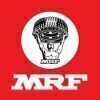Filter interviews by
Kems Auto Components Interview Questions, Process, and Tips
Kems Auto Components Interview Experiences
5 interviews found
(4 Questions)
- Q1. What is the purpose MSA
- Ans.
MSA stands for Measurement System Analysis. It is used to assess the capability of a measurement system to provide accurate and reliable results.
MSA helps in identifying sources of variation in measurement systems.
It ensures that the measurement system is capable of producing accurate and reliable results.
MSA includes studies like Gage R&R (Repeatability and Reproducibility) to assess measurement system variation.
I...
- Q2. What is the difference between Control plan and Quality plan
- Ans.
Control plan specifies how to control a process, while Quality plan outlines the overall quality objectives and strategies.
Control plan focuses on process control methods and parameters
Quality plan outlines quality objectives, standards, and strategies
Control plan is more detailed and specific to the production process
Quality plan is more general and covers overall quality management
Both plans are essential for ensurin
- Q3. Cp and Cpk formulas
- Q4. How to control rejection
- Ans.
Rejection can be controlled by implementing robust quality control measures and continuous improvement processes.
Implementing thorough quality control checks at every stage of production
Regularly reviewing and analyzing rejection data to identify root causes
Training employees on quality standards and best practices
Implementing corrective and preventive actions based on rejection trends
Collaborating with suppliers to im
(2 Questions)
- Q1. Tell me about family background
- Q2. What is roles and responsibilities in current company
Quality Engineer Interview Questions asked at other Companies
I applied via Walk-in and was interviewed in Jul 2024. There were 2 interview rounds.
(1 Question)
- Q1. Personal information
(2 Questions)
- Q1. Cnc machine programming
- Q2. G codes and m codes
Interview Preparation Tips
organization accomplish its ambitions
CNC Operator Interview Questions asked at other Companies
(2 Questions)
- Q1. Why you leave your past company?
- Q2. How to manage shop floor?
- Ans.
Shop floor can be managed effectively by implementing efficient production processes, ensuring proper communication, maintaining a clean and organized workspace, and prioritizing safety.
Implement efficient production processes to optimize workflow and minimize downtime.
Ensure proper communication among team members to avoid misunderstandings and delays.
Maintain a clean and organized workspace to improve efficiency and ...
(2 Questions)
- Q1. What is the difference between Geometrical tolerance & therotical tolerance?
- Ans.
Geometrical tolerance refers to the allowable variation in dimensions and form of a part, while theoretical tolerance is the ideal or perfect value for a dimension.
Geometrical tolerance allows for deviations in dimensions and form to ensure proper fit and function of parts.
Theoretical tolerance represents the ideal or perfect value for a dimension, with no allowance for variation.
Geometrical tolerance is specified usin...
- Q2. What are the root cause for ovality?
- Ans.
Ovality in production engineering can be caused by factors such as improper tooling, material inconsistencies, and machine misalignment.
Improper tooling can lead to uneven pressure on the material, causing it to deform into an oval shape.
Material inconsistencies, such as variations in thickness or hardness, can result in non-uniform stretching during the production process.
Machine misalignment, where the equipment is n...
Production Engineer Interview Questions asked at other Companies
I applied via Walk-in and was interviewed in Jun 2023. There were 5 interview rounds.

(1 Question)
- Q1. Drawings reading is very important
(1 Question)
- Q1. Good knowledge of Gd&t tools
(1 Question)
- Q1. Instruments handling like snap gauges cmm vernier micrometer etc..
(1 Question)
- Q1. Personal details and salary discussions
Interview Preparation Tips
Quality Engineer Interview Questions asked at other Companies
Kems Auto Components interview questions for popular designations
I applied via Company Website and was interviewed in Mar 2021. There were 3 interview rounds.
Interview Questionnaire
2 Questions
- Q1. Questions are which i have mentioned in my CV
- Q2. Reason for resignation in Previous company
Interview Preparation Tips
Senior Quality Engineer Interview Questions asked at other Companies
Get interview-ready with Top Kems Auto Components Interview Questions
Interview questions from similar companies

Interview Questionnaire
1 Question
- Q1. Genral diploma mechanical Related question

I applied via Job Portal and was interviewed before Feb 2021. There were 2 interview rounds.

(1 Question)
- Q1. Explain about the quality tools and techniques
- Ans.
Quality tools and techniques are used to ensure and improve the quality of products and processes.
Quality control charts: Used to monitor and control process variations.
Cause-and-effect diagrams: Help identify and analyze potential causes of problems.
Pareto charts: Used to prioritize and focus on the most significant issues.
Root cause analysis: A systematic approach to identify the underlying causes of problems.
Statist...
Interview Preparation Tips

Interview Questionnaire
4 Questions
- Q1. Personal and functional
- Q2. About your job description and processes and your achievements
- Q3. Your plus and minus
- Q4. Senior Management Intraction on the basis of personal, behavioral, backgrounds,job function and achievements.

Interview Questionnaire
2 Questions
- Q1. No one Question asked.
- Q2. It is Direct joining because of Training.

I applied via Recruitment Consultant and was interviewed before Jan 2021. There was 1 interview round.
Interview Questionnaire
3 Questions
- Q1. How many level in ppap
- Ans.
There are 5 levels in PPAP (Production Part Approval Process).
PPAP has 5 levels: Level 1, Level 2, Level 3, Level 4, and Level 5.
Each level represents a different stage of the PPAP process.
Level 1 includes documentation submission, while Level 5 involves customer approval.
The higher the level, the more comprehensive the PPAP requirements become.
PPAP is used to ensure that suppliers meet the quality standards of their c
- Q2. Difference between cp and cpk
- Ans.
Cp measures the capability of a process to meet specifications, while Cpk measures the capability of a process to meet specifications considering centering.
Cp is a short-term capability index, while Cpk is a long-term capability index.
Cp considers only the spread of the process, while Cpk considers both the spread and the centering of the process.
Cp is calculated using the formula Cp = (USL - LSL) / (6 * standard devia...
- Q3. What is capa
- Ans.
CAPA stands for Corrective and Preventive Action. It is a systematic approach to identify, investigate, and resolve quality issues.
CAPA is a key component of quality management systems.
It involves identifying the root cause of a problem, implementing corrective actions to address the immediate issue, and preventive actions to prevent recurrence.
CAPA processes typically include steps like problem identification, investi...
Interview Preparation Tips
Kems Auto Components Interview FAQs
Tell us how to improve this page.
Kems Auto Components Interviews By Designations
Interview Questions for Popular Designations
Kems Auto Components Interview Process
based on 6 interviews
Interview experience
Interview Questions from Similar Companies
Kems Auto Components Reviews and Ratings
based on 57 reviews
Rating in categories
|
Quality Engineer
32
salaries
| ₹2 L/yr - ₹4.5 L/yr |
|
CNC Machine Operator
9
salaries
| ₹2.1 L/yr - ₹3.2 L/yr |
|
Engineer
7
salaries
| ₹3 L/yr - ₹4.3 L/yr |
|
Senior Quality Engineer
7
salaries
| ₹3 L/yr - ₹9 L/yr |
|
Executive Accountant
7
salaries
| ₹1.9 L/yr - ₹4 L/yr |

Bosch

JBM Group

Samvardhana Motherson Group

Subros
- Home >
- Interviews >
- Kems Auto Components Interview Questions
















